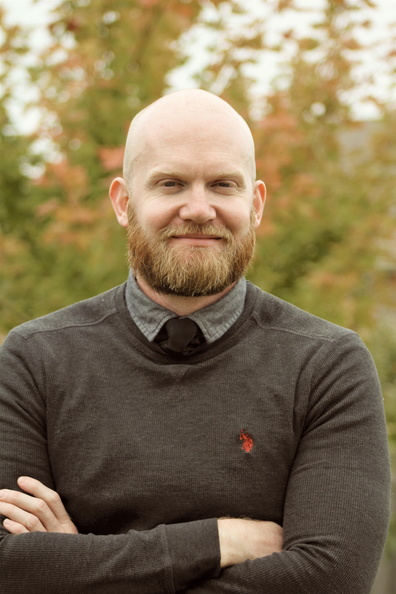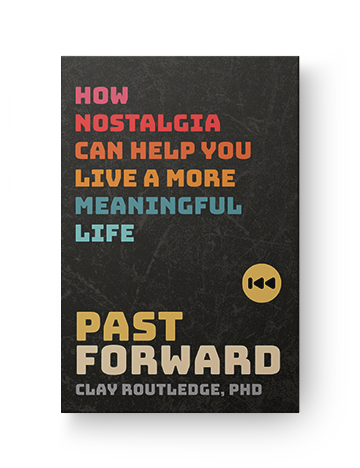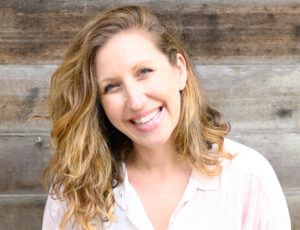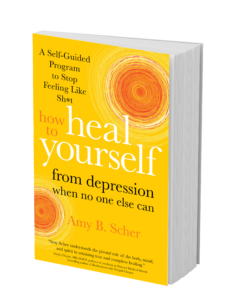Our Journey into Deeper Mystery – with James Hollis
James Hollis, PhD, is a graduate of Zürich’s Jung Institute, a licensed Jungian analyst practicing in Houston, Texas, and author of 13 books, including Finding Meaning in the Second Half of Life and What Matters Most: Living a More Considered Life and the Sounds True audio learning program Through the Dark Wood: Finding Meaning in the Second Half of Life.
Here, Dr. Hollis invites us to discern directly what a “spiritual life” is for us personally, opening ourselves to the mystery of our time here as a human being. At the end of our life, shares Hollis, we want to be able to say we’ve been here, that it mattered, that we lived our journey and not someone else’s, and that we’ve touched the deepest part of who we are.
A free video from our dear friend Thich Nhat Hanh
Enjoy this lovely video from our dear friend, Thich Nhat Hanh, recorded at the Body and Mind are One retreat in Colorado in the summer of 2011. There is something about Thich Nhat Hanh’s presence that just allows for an outpouring of mindfulness, love, kindness, and compassion. When we at Sounds True reflect upon mindfulness, we think immediately of our dear friend, Thich Nhat Hanh, and how fortunate we are to have the opportunity to work with him, something we’ve been blessed with over the last 20+ years. In so many ways, he embodies the work we’re doing here: our values, vision, and mission.
The beautiful and inspiring footage we gathered from Body and Mind are One was edited into a seven-hour online course, which you can enjoy from the comfort of your own home, on a schedule that works for you. More than an ordinary training course in mindfulness, Body and Mind Are One is at once a living transmission of insight from this beloved Zen master and a practical teaching series covering fundamental principles for a joyful life.
How Trees Boost Your Immune System

Qing Li, the medical professor in Tokyo, put together a list of basic rules to create the ideal interaction between forest trees and the human immune system. Professor Li is one of the leading scientists in the area of forest medicine. He advises:
- Remain in a woodland for at least two hours, while walking approximately 1.5 miles (2.5 km). If you have four hours to spend there, hike about 2.5 miles (4km). In order to boost your natural killer cells and anti-cancer proteins over a longer period of time as well, it is recommendable to spend three days in a row in a forest.
- Make a walking/hiking plan that suits your physical condition. Make sure you don’t get tired during your time in the woods.
- If you feel tired, take a break whenever you want and as long as you want. Look for a place in the forest where you feel comfortable.
- If you’re thirsty, try to drink water or tea.
- Pick a place in the forest that you spontaneously like and invites you to stay. Stay there for a while, sitting and reading, for example, or meditating, whatever you want, but enjoying the gorgeous ambiance and relaxing.
- To lastingly maintain the number and activity of your immune system’s natural killer cells and anti-cancer proteins, Qing Li recommends staying in a forest region two or three days per month and advises spending about four hours each day in the woods.
- In addition to his advice, I’d like to add the following tips that I consider very helpful:
- The contents of the anti-cancer terpenes in the forest air change over the seasons. The highest concentration is in summer and the lowest in winter. They increase rapidly in April and May, and in June and August, reach their peak. During these months, there are the most terpenes in the woods for your immune system to absorb.
- Furthermore, you can find the highest concentration of terpenes in the middle of the forest, since tree population is the densest there. The tree leaves and needles form an especially rich source. Additionally, the dense canopy prevents these gaseous substances from escaping the forest. Therefore, it is advisable to go further into the woods and not just spend time on the edges.
- When the air is moist, for example after rain or during fog, a particularly large amount of healthy terpenes is swirling around the forest air. This means we weren’t going crazy when we felt especially good during a walk in the woods after rain showers.
- By the way, anti-cancer terpenes are the densest in and near the ground, where we humans are normally present. Higher up, some of them are destroyed by the sun’s UV light that manages to get through the canopy here and there. Thus, it appears as if the distribution of this healthy substance was actually tailored to our body size.
Important: Don’t forget that forest medicine is especially helpful when it comes to preventing disease. However, if you are already sick, or feel sick, please go straight to your doctor. Forest medicine is under no circumstances a replacement for conventional medical check-ups.
Looking for more great reads?

Excerpted from The Biophilia Effect by Clemens G. Arvay.

Clemens G. Arvay, MSC, is a biologist and nonfiction writer who studied landscape ecology and applied plant science in Vienna and Graz. He centers his work on the relationship between man and nature, focusing on the health-promoting e?ects of contact with plants, animals, and landscapes. His most recent book is The Healing Code of Nature (Random House Germany, 2016). He lives in Austria. For more, visit arvay.info.
Breathing Meditations – a new free gift from Sounds True
The transformational power inherent in the simple act of breathing is truly remarkable. With Breathing Meditations, join seven Sounds True authors for a series of simple guided practices that can open you to the many benefits of breathwork—from a deeper sense of presence and serenity in the moment, to revitalized health and ease of being, to creative insight and higher perspective, and more.
Stream or download Breathing Meditations here at no cost!
Tracks include:
1. “Breathing Meditation” by Jack Kornfield from Meditation for Beginners
Learn the art of following the breath, a foundational skill for all meditators, with Jack Kornfield, co-founder of the Insight Meditation Society.
2. “The Relaxing Breath” by Andrew Weil, MD from Breathing: The Master Key to Self-Healing
Dr. Andrew Weil gives us a potent practice for activating the body’s relaxation response and returning to balance after stressful situations.
3. “Breath Meditation” by Sharon Salzberg from Guided Meditations for Love and Wisdom
A mindful breathing practice that helps us open the heart and experience compassion for ourselves and others.
4. “Soft Belly” by James Gordon, MD from Freedom from Depression
Harvard-educated psychiatrist Dr. James Gordon presents a guided exercise for liberating stuck energy in the body.
5. “Observing the Breath” by Shinzen Young from Meditation: A Beginner’s Guide
An introductory meditation inviting us to discover what can happen through full and complete attention to the breath.
6. “The Power Breath” by Mark Thornton from Meditation in a New York Minute
Executive meditation coach Mark Thornton teaches us a stress-reducing practice that both relaxes and reenergizes the body.
7. “Meditation on the Breath” by Sally Kempton from Beginning Meditation
A guided meditation in which our breath becomes the doorway to the depths of the self.

The Modern Science of Nostalgia
In the first two decades of this new century, the science of nostalgia has exploded. There are now hundreds of published scientific studies exploring a wide range of questions about how humans experience nostalgia and the different roles it plays in daily life. Scholars from all over the world are now conducting diverse studies about the ways nostalgia influences our lives.
Keeping in mind the history of nostalgia, it’s amazing what we are now learning. Nostalgia is certainly not a disease and it’s far more than just a source of entertainment. By using the gold standard of science—experiments in which research participants are randomly assigned to different treatment conditions—we’ve been able to answer a number of key questions. What causes people to experience nostalgia? How does nostalgia impact how people feel about their current lives? Does nostalgia influence our interests, goals, and behavior? If so, in what ways? Do the effects of nostalgia differ from person to person?
In addition to experimental studies, we have now conducted rigorous survey studies observing how nostalgia naturally occurs and what psychological characteristics, life experiences, and behaviors it tends to be associated with. This has helped us answer other intriguing questions. Are some individuals naturally more nostalgic than others? Is there a nostalgic personality type? Are people more or less nostalgic at different ages? Are people more or less nostalgic when experiencing different life changes such as moving away from home, starting a new career, facing personal tragedy and loss, or experiencing major life disruptions such as a global pandemic?
Over the last two decades, we have asked thousands of people to document their nostalgic memories. This has given us a great deal of insight into the more qualitative experience of nostalgia, which has in turn helped us develop a more complete picture of what happens inside a person’s mind when they take a nostalgic trip down memory lane. These personal stories have guided a lot of my research questions on the topic.
Combining these different approaches to researching nostalgia, mycolleagues and I have made a number of discoveries that cast this old emotional experience in a brand-new light. We’ve put nostalgia under the microscope, and what we’ve discovered is that nostalgia doesn’t cause problems as proposed by past scholars, physicians, and psychologists. On the contrary, problems cause nostalgia.
When people are down because they feel sad, lonely, meaningless, uncertain, or even just bored, they often turn to nostalgia. Nostalgia lifts our spirits and offers stability and guidance when life becomes chaotic and the future feels uncertain. Even though nostalgia contains sentiments of loss, it ultimately makes people feel happier, more authentic and self-confident, more loved and supported, and more likely to perceive life as meaningful. In addition, nostalgia inspires action. Nostalgia starts with people self-reflecting on cherished memories, but it also drives people to look outside of themselves, help others, create, and innovate.
Though I’ve been researching nostalgia for a couple of decades now, I’ve remained excited about the topic because there is still so much to learn and so many ways to apply the knowledge we’ve gained to helping people improve their lives and the world we all share.
Journal Prompts:
Get out a pen or pencil and a piece of paper; or use a digital device, such as a phone, tablet, or computer. Briefly jot down your reactions to the following questions:
- How would you define nostalgia?
- Do you consider yourself to be highly nostalgic, moderately nostalgic, or rarely nostalgic?
- Do you think the activities in which you engage in the present—from your work to your personal hobbies—are meaningfully influenced by nostalgia?
- Do you think nostalgia can help you pursue your current goals and make plans for the future? Finally, what is a nostalgic memory that really stands out as special to you? Describe this memory and how it makes you feel.
Excerpted from Past Forward: How Nostalgia Can Help You Live a More Meaningful Life by Clay Routledge, PhD.

Clay Routledge, PhD, is a leading expert in existential psychology. His work has been featured inn the New York Times, the Wall Street Journal, the Washington Post, the Guardian, the Atlantic, The New Yorker, Wired, Forbes, and more. He is the vice president of research and director of the Human Flourishing Lab at the Archbridge Institute. For more, visit clayroutledge.com.

Past Forward
Learn More
Amazon | Barnes & Noble | Bookshop | Sounds True
The Importance of Being Vulnerable
Emotions are the primary way we connect with others. In fact, for all the ways we perceive that sharing our emotions causes trouble, it’s actually worse for us not to. Sharing our truest, most vulnerable selves actually prevents us from the isolation that occurs when we miss out on the deep connection that only comes from this type of transparency. While social media can be a place of great support, it’s also caused a huge challenge. Because we’ve created a world in which we are addicted to showing our curated emotions, social media posts rarely tell the entire story. We’ve gotten accustomed to holding back our real selves—so much, in fact, that we have a totally distorted view of what’s “real.”
On a wet fall day as I was researching the negative effects of social media for this book, I noticed that a heavy sense of melancholy had fallen over me. Pushing myself to go out for a short walk in my beloved Central Park, only a block away, took every ounce of energy I had. When I was out, my sadness didn’t fade, but astounded by the colorful change of leaves, I felt inspired to take a handful of photos. They were the kind that Instagram is made of. When I got home, I decided to post them on social media. But earlier that day I had read something that was still with me: what happened when Tracy Clayton, host of the BuzzFeed podcast Another Round, asked people to repost photos they’d previously shared on social media, but this time, with the “real story” behind them. The photos that most of us would have longed for had painful stories behind them. One woman admitted to a terrible anxiety attack that took her all day to overcome, someone else shared the grief over a loss of a loved one stuffed under their smile at a party, and so on. What this shows us is that we are all running after a farce. But what’s worse, it shows that we’re all co-creating it.
So after a brief pause, I posted my gorgeous fall photos from the park with this: Full disclosure: Inspired by research for my next book about how social media posts screw us up by making everything and everyone seem OK even when they are not, I’m adding the truth here. These pictures were taken on a walk I dragged myself on because I felt sad today for no particular reason (except for that life is a lot sometimes).
I am typically not a sad person, nor am I one who shares it on social media when I am. I am very transparent on my author account, but for some reason, I am less so on my personal page. The response that day when I shared how I really felt took me by great surprise. Dozens of people I rarely heard from came out of the blue with comments, texts, and private messages. And what most of them were saying was, “I feel that way too.” In our technological age, we are more connected than ever before, but also lonelier and more isolated than ever before. I wondered that day, What if everyone stopped staying so busy pretending everything was perfect? What if instead of hiding our vulnerabilities to prevent the isolation we fear, we are driving it?
The bottom line is that, over and over again, I’ve learned that emotions are better in every way when they aren’t kept inside and to myself.
This is an excerpt from How to Heal Yourself From Depression When No One Else Can: A Self-Guided Program to Stop Feeling Like Sh*t by Amy B. Scher.
 Amy B. Scher is an energy therapist, expert in mind-body healing, and the bestselling author of How to Heal Yourself When No One Else Can and How to Heal Yourself from Anxiety When No One Else Can. She has been featured in the Times of India, CNN, HuffPost, CBS, the Washington Post, Cosmopolitan, the Los Angeles Review of Books, Curve magazine, and San Francisco Book Review. Scher was also named one of the Advocate’s “40 Under 40.” She lives in New York City. For more, visit amybscher.com.
Amy B. Scher is an energy therapist, expert in mind-body healing, and the bestselling author of How to Heal Yourself When No One Else Can and How to Heal Yourself from Anxiety When No One Else Can. She has been featured in the Times of India, CNN, HuffPost, CBS, the Washington Post, Cosmopolitan, the Los Angeles Review of Books, Curve magazine, and San Francisco Book Review. Scher was also named one of the Advocate’s “40 Under 40.” She lives in New York City. For more, visit amybscher.com.

Learn More
Sounds True | Amazon | Barnes & Noble | Indiebound | Bookshop




